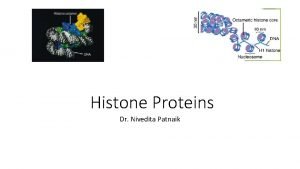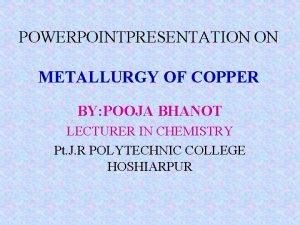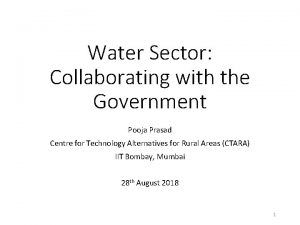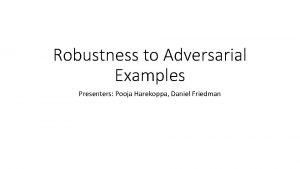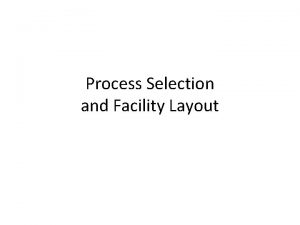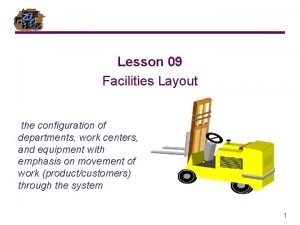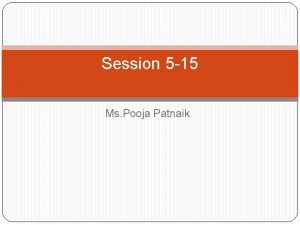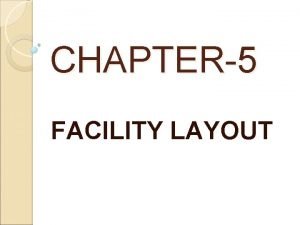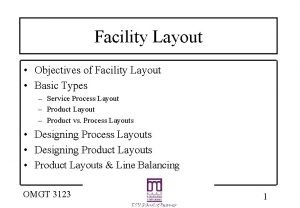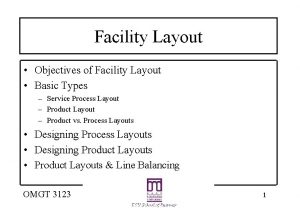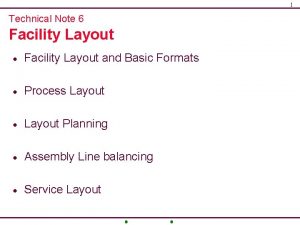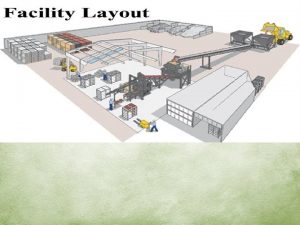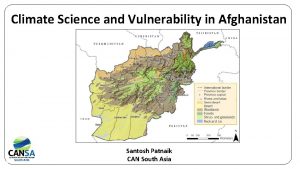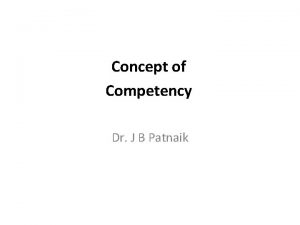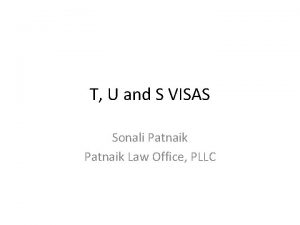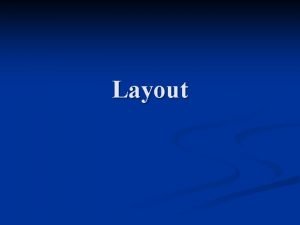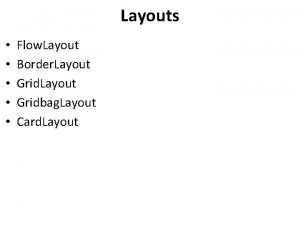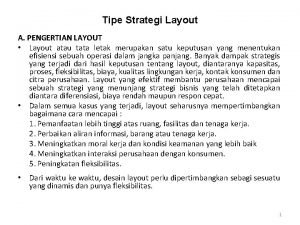Session17 23 POOJA PATNAIK Facility Layout Facility layout



















- Slides: 19

Session-17 -23 POOJA PATNAIK

Facility Layout Facility layout can be defined as the process by which the placement of departments, workgroups within departments, workstations, machines, and stockholding points within a facility are determined This process requires the following inputs: Specification of objectives of the system in terms of output and flexibility Estimation of product or service demand on the system Processing requirements in terms of number of operations and amount of flow between departments and work centers Space requirements for the elements in the layout Space availability within the facility itself

Need of layout decision and redesign � Need for layout decisions : � Need for Redesign: It helps to determine long term in-efficient operation efficiency Accidents, health hazards and It establishes company’s low safety. competitive priorities in regard changes in product to capacity, processes design/service design flexibility. Introduction to new It helps the organization to products/services. achieve strategic advantage Changes in volume of output or that supports differentiation, product mix changes low cost, fast response Changes in method, processes or equipment Low employee morale.

Objective Of layout: � Higher space utilization � Improved flow of material, information and people � Improved employee morale and working conditions � Improved production capacity. � Reduce material handling cost. � Reduce health hazards � To allow ease of maintenance � Improve productivity. � Higher flexibility

Factors influencing layout �Material �Worker �Machinery �Product �Types of industry �Location �Managerial Policies

Principles of Layout � The Principle of Minimum Travel � Principle of Sequence � Principle of Usage � Principle of Compactness � Principle of Safety and Satisfaction � Principle of Flexibility � Principle of Minimum Investment

Types of layouta) Process Layout i. Process layout or functional layout or job shop layout-Machines grouped by process they perform. These machines include lathe, drilling, milling etc. i. Eg: Maruti Service Station. ii. Process layout is commonly found in service set ups like bank, hospitals, post offices

Advantages and Disadvantages-Process Layout Sl. No Advantages Disadvantages 1. Maintenance cost is low because of low cost general purpose machines Material handling is time consuming as there is no fixed route 2. This system is more flexible to design changes in products or processes compared to product layout WIP is high in batch processing 3. Breakdown in a machine do not lead to halt in production as substitute machines are there Low output rate , thus high cost per unit. 4. The system promotes creativity of workers due to variety of tasks performed by them. Routing and scheduling is tedious and time consuming for different products. 5. - High cost of supervision because of special treatment to every products being processed.

Types of layoutb) Product Layout � Product layout or line processing layout or flow-line layout. Linear arrangement of workstations to produce a specific product The production line is often called the assembly line. The assembly line has a mechanized moving platform which moves at regular intervals.

Advantages and Disadvantages-Product Layout Sl. N o. Advantages Disadvantages 1. Easier material handling and less inventory cost Maintenance cost is slightly high to ensure smooth running of line 2. Less supervision and labor training costs Inflexible to design changes in products or processes 3. A high output rate thus low cost of item per unit Breakdown in machines or absenteeism of workers leads to halt in production 4. High efficiency of labor and equipment Monotonous and repetitive works lead to frustration of workers 5. No need of routing and scheduling once the line is already done -

Types of layout c) Fixed Position Layout �Fixed position layout or static layout-Used in projects where the product cannot be moved thus equipment , labor, resources are brought to the site basically skilled people are required. �

Comparison between product layout and process layout �Product Layout �Process layout Sequential arrangement of machines Continuous, mass production basically assembly Product is Standardized made to stock Demand is stable and volume is high Inventory low in process and high finished goods Avoidance of bottleneck Early detection of badly produced items. Functional grouping of machines Intermittent, job shop, batch production, mainly fabrication. product is varied and made to order demand is fluctuating and volume is low Inventory high in process and low finished goods greater flexibility in production Full utilization of the plant

Cellular Layout and FMS � Machines are grouped into cells where the cells performs like a product layout or process layout. �Each cell in CM layout is formed to produce single part family �Advantage: low WIP inventories, reduced material handling cost, simplified production planning, improved visual control, increased operator responsibility. � Disadvantages: Reduced utilization of the machines, Duplicate pieces of equipment may be needed

CM

Service Layout � Goal--maximize net profit per square foot of floor space � Services capes Ambient Conditions Spatial Layout and Functionality Signs, Symbols

Layout Tools and Techniques Ø Plant layout template is a scaled representation of a physical object in a layout. Templates Ø Operations Sequence Analysis Operations sequence analysis helps arrange departments graphically analyzing the layout problem. Line balancing is the study that nearly equally divides the work to be done among the workers and minimizes the number of employees required to complete a project.

Criteria for Selection and Design of Layouts Ø Material handling cost and worker effectiveness are the two criteria used for selecting layout design. Ø The various methods used for selecting the best layout among several alternatives layouts are 1. Travel Chart Method 2. Load-Distance Analysis Method 3. Systematic Layout Planning

Block diagramming � Create load summary chart � Calculate composite (two way) movements � Develop trial layouts minimizing number of nonadjacent loads

Project Assignments �Make the layout of a floor of the main CUTM building. Identify and label various rooms and halls in order to improve the efficiency in terms of walking distance. Brainstorm the various modifications suggested in class and prepare an action plan for implementation.
 Aradhana patnaik husband
Aradhana patnaik husband Nivedita patnaik
Nivedita patnaik Pooja bhanot
Pooja bhanot Pooja water supply
Pooja water supply Contractive autoencoder
Contractive autoencoder Pooja harekoppa
Pooja harekoppa Pooja shirodkar
Pooja shirodkar Pooja ghelani
Pooja ghelani Pooja nuti
Pooja nuti Hiten morar
Hiten morar Pooja bhayani
Pooja bhayani Dae kyoo kim
Dae kyoo kim Dr pooja mahadev
Dr pooja mahadev Dr pooja mahadev
Dr pooja mahadev Lizette charbonneau pictures
Lizette charbonneau pictures Process selection and facility layout
Process selection and facility layout Facility layout
Facility layout Meaning of facility layout
Meaning of facility layout The main issue in designing process layouts concerns what
The main issue in designing process layouts concerns what Type of plant layout
Type of plant layout

